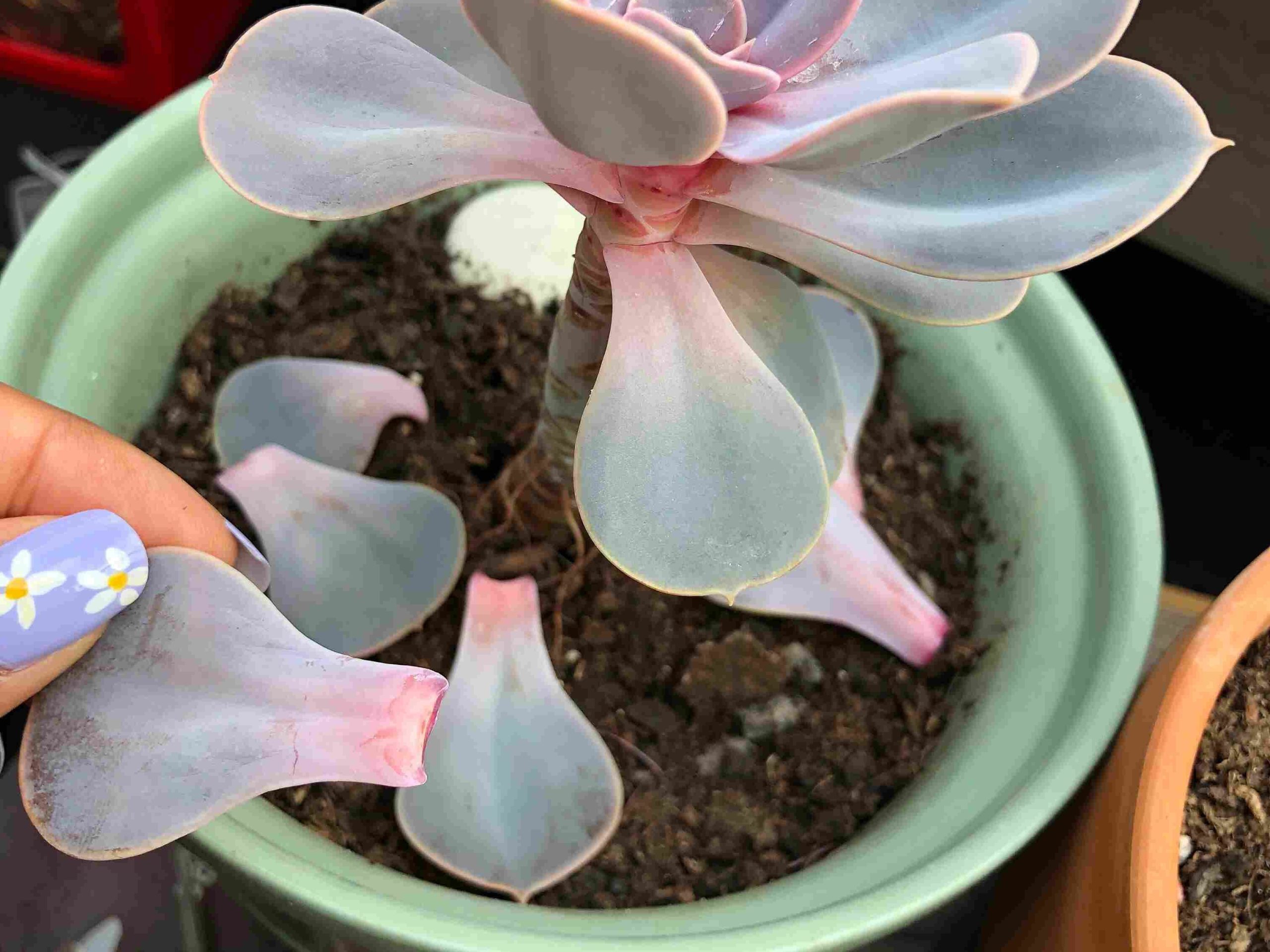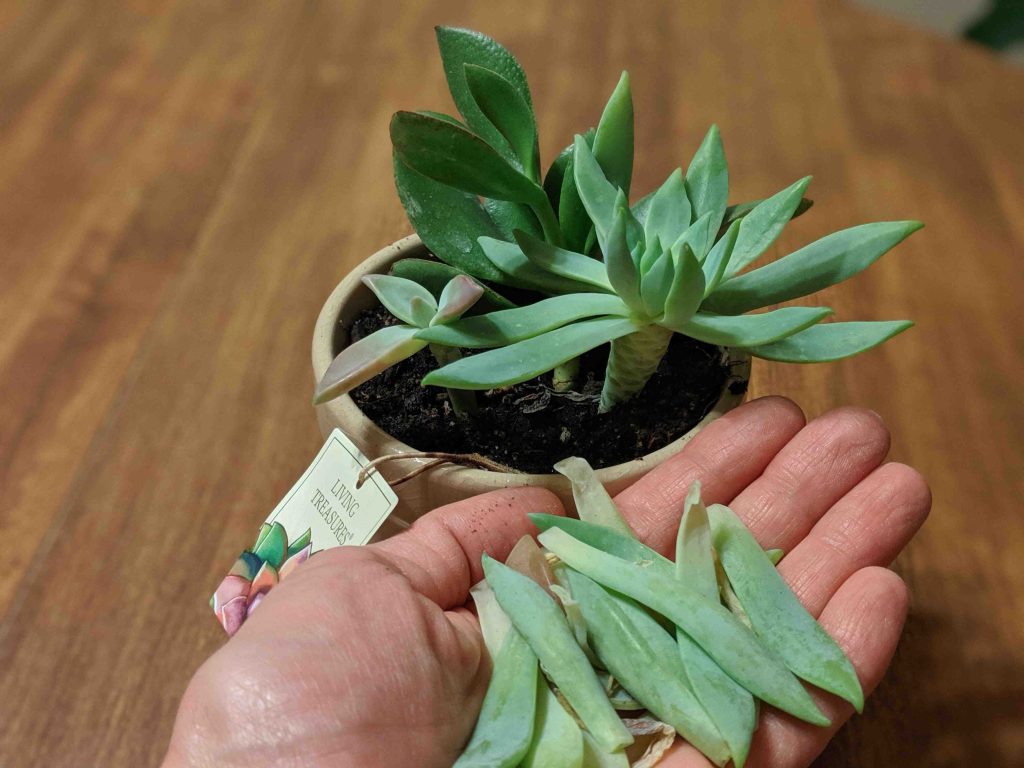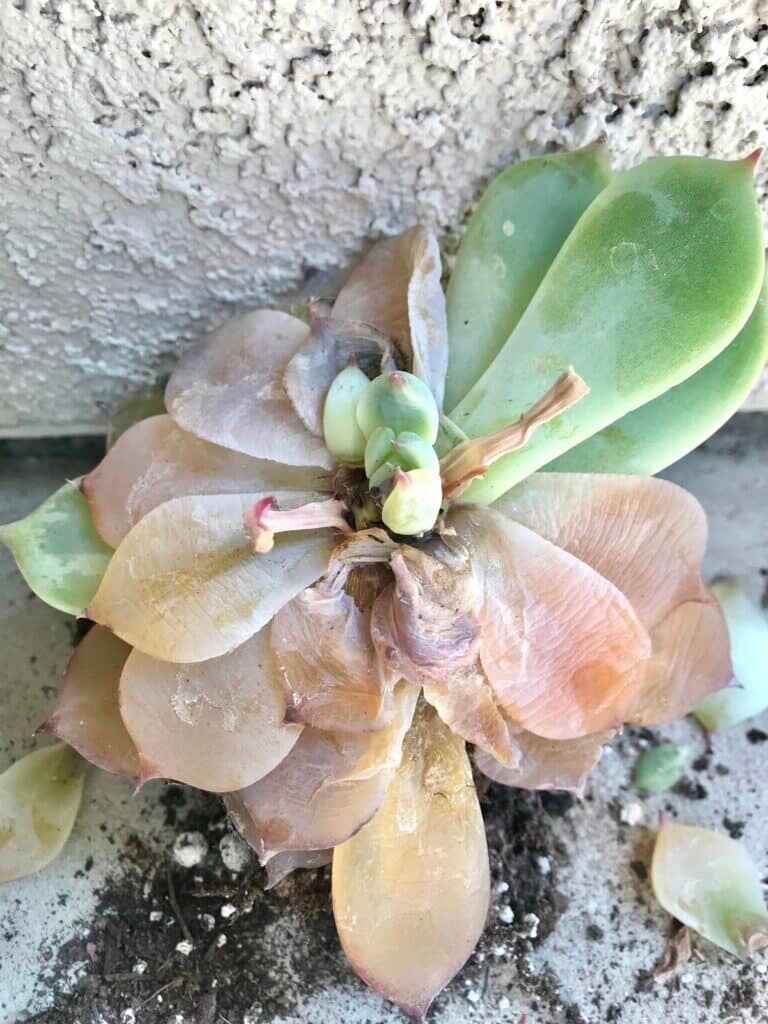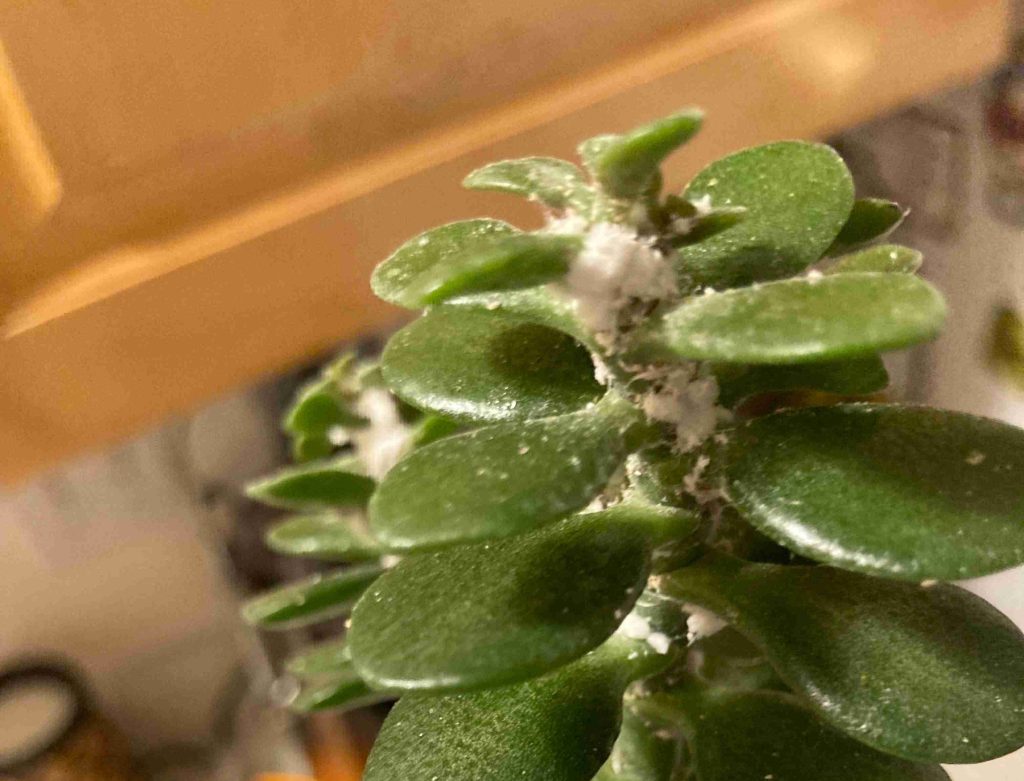Succulents are often praised as the “easy-going” plants of the gardening world. They’re charming, resilient, and don’t ask for much attention. But even these hardy little beauties can have moments of distress, and one of the most common worries for succulent owners is seeing their leaves fall off.
So, why is this happening? Is it something you did—or didn’t do? Don’t panic just yet! A leaf drop is usually a sign that your plant is trying to tell you something. Succulent leaves can fall due to overwatering or underwatering, pests or diseases, high temperatures, or it’s just normal natural shadding.

In this post, we’ll explore the possible reasons for those falling leaves and what you can do to help your succulent bounce back to its vibrant, happy self.
Let’s dive in and decode what’s going on!
Common Causes of Succulent Leaf Drop
When your succulent starts shedding its leaves, it’s like your plant is waving little red flags at you. Each fallen leaf is a clue, and with a bit of investigation, you can figure out what’s wrong. Let’s go through the most common reasons for this mystery.
1. Overwatering
Succulents don’t like their roots sitting in soggy soil. When you overwater, their roots can’t breathe, and the leaves start turning mushy or translucent before falling off. Think of it as your succulent saying, “Hey, I’m drowning here!”
Fix it: Water only when the soil is completely dry. A good rule is to check the top inch of soil before grabbing your watering can.
2. Underwatering
While succulents are drought-tolerant, they still need some water to thrive. If the leaves are dry, crispy, and shriveled, your plant is likely thirsty.
Fix it: Give your plant a deep drink, but don’t leave it sitting in water. Keep an eye on the soil to find the right balance.
3. Temperature Stress
Succulents hate extreme temperatures. If it’s too cold or too hot, they can get stressed, and their leaves may drop off. A sudden change in temperature (like moving them from indoors to direct sunlight) can also upset them.
Fix it: Keep them in a stable environment with moderate temperatures. Avoid placing them near drafty windows or heating vents.

4. Not Enough Sunlight
Succulents love sunlight, but if they’re stuck in a dark corner, they’ll start losing leaves. Without enough light, they weaken and shed leaves to conserve energy.
Fix it: Move your succulent to a bright spot with plenty of indirect sunlight. A south-facing window is ideal.
5. Pests or Diseases
Sometimes, the problem isn’t you—it’s pests like mealybugs or fungal infections. These invaders damage the plant and cause leaves to fall off.
Fix it: Inspect your plant closely. If you spot pests, wipe the leaves with rubbing alcohol or use an organic pesticide.
6. Natural Shedding
Good news—if it’s just the older leaves at the bottom falling off, your plant is probably fine! Succulents naturally shed old leaves as they grow.
Fix it: Nothing to fix here. Just remove the dead leaves to keep your plant looking tidy.
Understanding these causes is the first step to helping your succulent thrive. Remember, even when things go wrong, your plant is tougher than it looks. It just needs a little care to get back on track!
How to Prevent Succulent Leaves from Falling Off
Want to keep your succulents looking their best? Follow these simple steps to avoid leaf drop and ensure your plant stays happy and thriving.
1. Water Properly
- Overwatering or underwatering is the main reason for falling leaves.
- Water only when the soil is completely dry.
- Use the “soak and dry” method: soak the soil, let it drain, and wait until dry before watering again.
2. Use the Right Soil
- Succulents need well-draining soil to avoid root rot.
- Use a cactus mix or create your own by mixing regular soil with sand or perlite.
3. Choose the Right Pot
- The pot should have drainage holes to let excess water escape.
- This prevents roots from sitting in water and helps the plant thrive.
4. Provide Proper Light
- Succulents love bright, indirect sunlight.
- Avoid direct sunlight for long hours, which can scorch their leaves.
- Use a grow light if natural light is limited.
5. Monitor Temperature
- Keep succulents in stable temperatures between 60–80°F (16–27°C).
- Protect them from drafts, heaters, and freezing conditions.
6. Inspect Regularly
- Check for pests or diseases, which can stress your plant and cause leaf drop.
- Remove pests with a cotton swab dipped in rubbing alcohol.
7. Tidy Up Old Leaves
- Remove dead or dry leaves to prevent pests and keep your plant looking neat.
With these easy care tips, your succulent will stay lush and vibrant. A little attention goes a long way in keeping those leaves right where they belong—on your plant! 🌱✨
Troubleshooting Guide
If your succulent’s leaves are falling off, don’t worry! Think of this as a mystery to solve, and every clue brings you closer to the solution. Here’s a quick troubleshooting guide to help you figure out what’s going wrong and how to fix it.
1. Problem: Mushy, Translucent Leaves

- Cause: Overwatering
- Solution: Stop watering immediately. Let the soil dry out completely. Remove mushy leaves and repot your succulent in well-draining soil if needed.
2. Problem: Dry, Shriveled Leaves

- Cause: Underwatering
- Solution: Give your plant a good drink of water. Be sure to soak the soil thoroughly, but never let it sit in water.
3. Problem: Scorched or Brown Leaves

- Cause: Too much direct sunlight
- Solution: Move your succulent to a spot with bright but indirect light. If outside, provide shade during the hottest parts of the day.
4. Problem: Leaves with Spots or Webbing

- Cause: Pests or diseases
- Solution: Inspect the plant for pests like mealybugs or spider mites. Clean affected areas with a cotton swab dipped in rubbing alcohol or use an organic pesticide.
5. Problem: Sudden Leaf Drop Without Warning
- Cause: Temperature stress
- Solution: Check the environment. Avoid placing your succulent near drafts, heaters, or air conditioners. Keep the temperature stable and moderate.
6. Problem: Bottom Leaves Falling Off Only
- Cause: Natural shedding
- Solution: Relax! This is normal. Just remove the dead leaves to keep the plant tidy.
This guide is like a first-aid kit for your succulents. With a bit of care and observation, you can nurse your plant back to health. Remember, every succulent is unique—what works for one may need tweaking for another. Happy troubleshooting! 🌵✨
Conclusion
Succulents might be tough little plants, but they still have their ways of asking for help. When their leaves start falling off, it’s not the end of the world—it’s just their way of saying something needs a little tweaking. The good news? With the right care and attention, your succulent can bounce back stronger than ever.
Remember, most leaf drop problems come down to simple things like water, light, or temperature. By following the tips in this guide, you’ll not only save your plant but also learn to “read” what it needs in the future.
So don’t stress! You’re on the right track to becoming a succulent whisperer. Keep experimenting, stay observant, and enjoy the journey of growing these charming plants. Before you know it, your succulent will be thriving again, showing off those plump, healthy leaves that make them so irresistible. 🌱✨
You’ve got this—happy planting! 🌵

